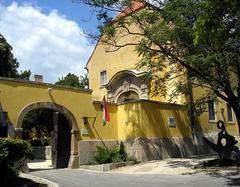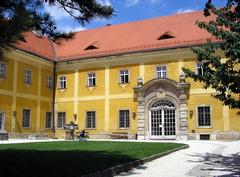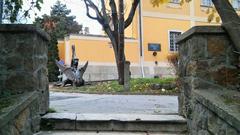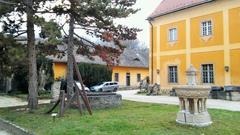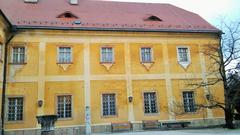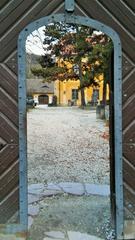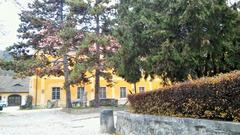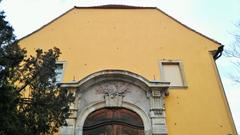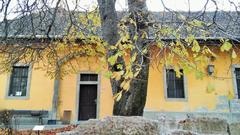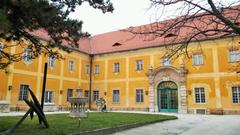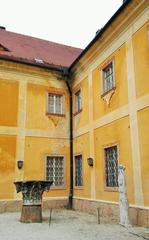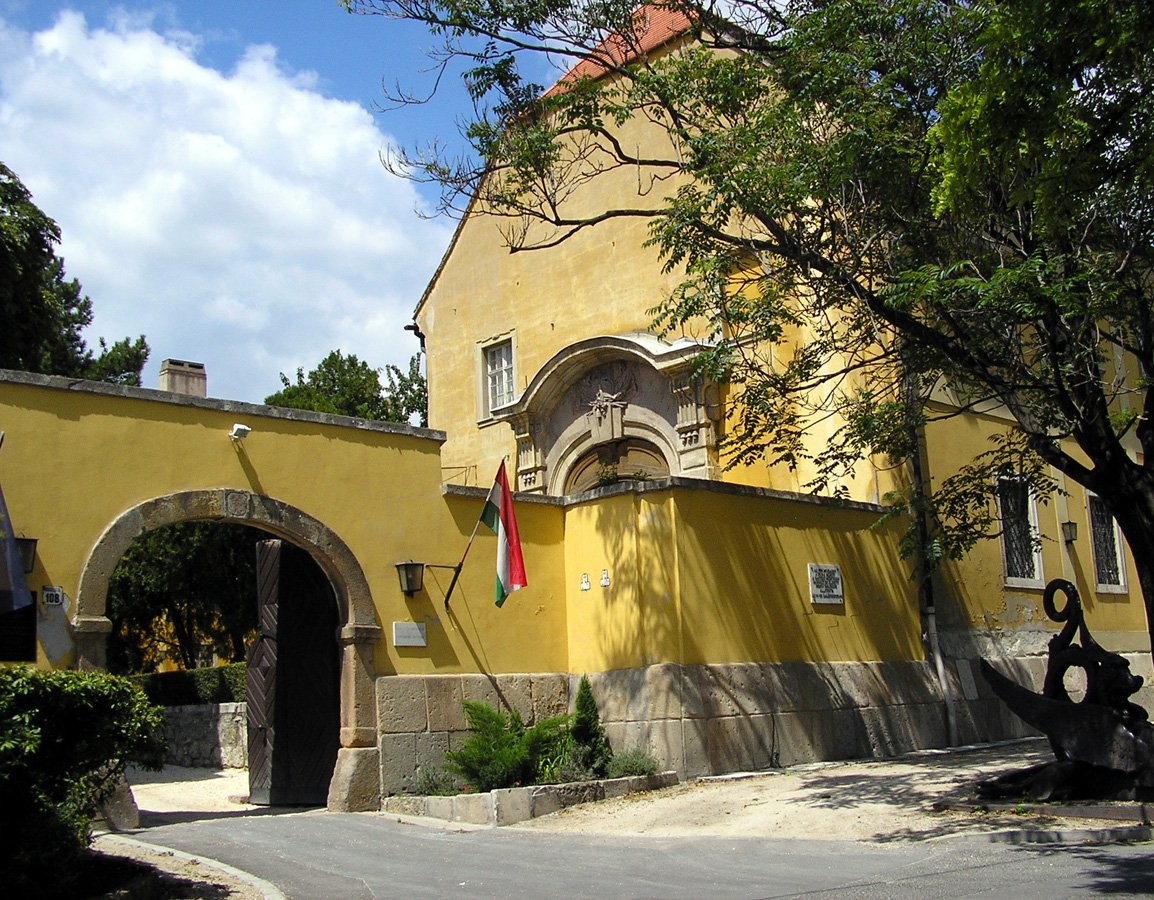
Kiscell Museum Visiting Hours, Tickets, and Budapest Historical Sites Guide
Date: 14/06/2025
Introduction
Set in the leafy Óbuda district of Budapest, the Kiscell Museum is a standout destination for anyone interested in the city’s urban evolution, cultural history, and art. Housed in an 18th-century Baroque monastery, the museum presents immersive exhibitions that narrate Budapest’s transformation from medieval settlements to a bustling modern capital. With thoughtfully preserved architecture, diverse collections, and dynamic cultural programs, Kiscell Museum offers a compelling window into the spirit of Budapest.
For essential planning, including visiting hours, ticket prices, and special events, refer to the official Kiscell Museum website and the Budapest History Museum’s platform.
Contents
- About Kiscell Museum: History and Significance
- Museum Collections and Exhibition Highlights
- Visiting Information: Hours, Tickets, and Accessibility
- Visitor Experience and Tips
- Nearby Attractions and Accommodation
- Frequently Asked Questions (FAQ)
- Visual and Virtual Resources
- Contact Information and Further Reading
About Kiscell Museum: History and Significance
Origins and Historical Evolution
The Kiscell Museum stands on the site of a Baroque monastery built in the 1740s for the Trinitarian order. After the dissolution of the order by Emperor Joseph II, the building underwent various secular uses, including as a residence and a printing house—mirroring Hungary’s broader shifts toward modernization.
In the early 20th century, Miksa Schmidt, a Viennese furniture manufacturer and art collector, acquired the property, preserving its architectural integrity and adapting it for cultural purposes. Schmidt’s philanthropic vision led to the establishment of the Kiscell Museum in 1937, following his bequest to the City of Budapest. Today, the museum is a branch of the Budapest History Museum, benefiting from shared expertise and resources (Kiscell Museum official site, Budapest History Museum on Google Arts & Culture).
Architectural and Cultural Importance
The original Baroque structure, with its ornate facades and vaulted interiors, stands as an artifact in itself. Key features include the atmospheric chapel, now a venue for concerts and contemporary art exhibitions, and the evocative “ruin church,” which hosts site-specific installations. The museum’s architecture showcases the creative repurposing of heritage sites and the dynamic interplay between sacred and secular history (Time Out Budapest).
Museum Collections and Exhibition Highlights
Permanent Collections
- Urban History Collection: Artifacts and documents trace Budapest’s transformation from the 18th century onward, highlighting urban planning, city maps, trade signs, and advertising posters (budapest.com).
- Fine Arts Collection: As the Municipal Gallery of the Budapest History Museum, Kiscell houses around 40,000 works, including paintings, sculptures, and graphic art from the late 19th century to contemporary times (fovarosikeptar.hu).
- Medieval Stone Collection: Fragments and sculptures from historic Budapest buildings are displayed in the former monastery’s evocative ruins (whichmuseum.com).
- Old Pharmacy Installation: A reconstructed pharmacy with original furnishings and instruments offers insight into historical medical practices (whichmuseum.com).
- Printing Equipment and Urban Curiosities: Old printing presses, shop signs, and advertising materials shed light on commercial and social life in Budapest (budapest.com).
Temporary and Special Exhibitions
Kiscell Museum is renowned for dynamic temporary exhibitions, often staged in the dramatic chapel:
- “Fashion and Tradition” (2008): The evolution of urban dress.
- “The Modern Flat, 1960” (2011): Reconstructed mid-20th-century Budapest apartment.
- “Street Fashion Museum” (2012): Youth subcultures and fashion.
- “Budapest Opera House” (2014): History of an iconic institution.
- Recent themes: Telecommunication history, artificial intelligence in photography, and contemporary identity (kiscellimuzeum.hu, btm.hu).
Visiting Information: Hours, Tickets, and Accessibility
Opening Hours
- Tuesday–Sunday: 10:00 AM – 6:00 PM
- Closed on Mondays
- Last admission: 30 minutes before closing (Kiscell Museum official)
Ticket Prices (as of June 2025)
- Adults: 3,000 HUF
- Students (6–26): 1,000 HUF
- Seniors (62–70): 1,500 HUF
- Children under 6 and seniors over 70: Free
- Disabled visitors (plus companion), teachers, and certain students: Free (with valid ID)
- Family Discount: 50% off for two adults with two children
- Free Admission Days: National holidays (March 15, August 20, October 23), Budapest Card holders, ICOM members, and on the last Saturday of each month for visitors under 26 (with children under 18 and up to two adults) (Kiscell Museum official, Muzej.hu ticket prices)
Guided Tours
- Available in Hungarian and English by appointment
- Group tours (up to 15): 20,000 HUF per group; booking in advance recommended (Kiscell Museum ticketing)
Accessibility
- Some areas have limited wheelchair access due to historical architecture; contact the museum ahead for details and assistance (budapest.com)
Location and Directions
- Address: 1037 Budapest, Kiscelli utca 108
- Public Transport: Bus lines 34 and 106. Parking is available nearby, but public transport is recommended (Kiscell Museum official)
Visitor Experience and Tips
- Allocate 1.5–2 hours to explore both permanent and temporary exhibitions, as well as the tranquil park.
- The museum’s labyrinthine interior and diverse collections reward slow exploration.
- Exhibit labels are mainly in Hungarian; English translations are available for major displays. Guided tours enhance understanding.
- Non-flash photography is permitted in most areas; check for any restrictions.
- The museum shop offers books and souvenirs related to Budapest’s history and art.
- Restrooms and cloakroom facilities are available; vending machines and seating areas provide light refreshments.
Nearby Attractions and Accommodation
- Óbuda Old Town: Explore the historic neighborhood’s Roman ruins and quaint streets.
- Aquincum Museum and Ruins: A major archaeological site nearby (Aquincum Museum).
- Danube Riverbanks: Scenic walks and views.
- Szemlőhegyi Cave: 2.3 km from the museum, a natural attraction (urtrips.com).
Accommodation:
- The Aquincum Hotel Budapest: 2.5 km away, 4-star hotel.
- Novotel Budapest Danube: 3.9 km away, convenient city access.
Dining: Óbuda offers a variety of cafés and restaurants serving Hungarian and international cuisine.
Frequently Asked Questions (FAQ)
Q: What are the Kiscell Museum opening hours?
A: Tuesday to Sunday, 10:00 AM – 6:00 PM; closed on Mondays.
Q: How much are tickets?
A: Adults: 3,000 HUF; students: 1,000 HUF; seniors: 1,500 HUF; children under 6 and seniors over 70: free. Discounts and free admission days available.
Q: Are guided tours available?
A: Yes, in Hungarian and English for groups by appointment.
Q: Is the museum wheelchair accessible?
A: Some areas have limited access; contact the museum in advance for assistance.
Q: Are there free admission days?
A: Yes, on Hungarian national holidays and for certain cardholders.
Visual and Virtual Resources
- Virtual tours and interactive maps are available via the Budapest History Museum’s online platform.
- For enhanced trip planning, explore high-quality images of the museum’s Baroque architecture, exhibition interiors, and park, with alt text such as “Kiscell Museum Budapest Baroque façade” and “Ruin church exhibition space at Kiscell Museum.”
Contact Information for Kiscell Museum Budapest
- Address: 1037 Budapest, Kiscelli utca 108
- Phone: +36 1 388 8560
- Email: [email protected]
- Official Website: Kiscell Museum Official Site
Summary and Recommendations
The Kiscell Museum is a unique blend of history, art, and architecture in one of Budapest’s most enchanting districts. Its rich collections, engaging special exhibitions, and peaceful park setting make it a top choice for locals and tourists alike. Plan ahead to take advantage of guided tours, free admission days, and nearby attractions. For the latest updates and event schedules, consult the official museum site and the Budapest History Museum’s portal. Enhance your visit with the Audiala app for audio guides.
Sources and Official Links
- Kiscell Museum official site, 2025
- Budapest History Museum on Google Arts & Culture, 2025
- Kiscell Museum official site - Visiting Information, 2025
- Kiscell Museum ticket prices, Muzej.hu, 2025
- Time Out Budapest - Best Museums in Budapest, 2024
- We Love Budapest - Kiscell Museum, 2024
- Budapest History Museum official site, 2025
- UrTrips - Kiscell Museum Budapest, 2025
